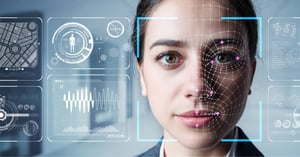When used correctly, disruptive technologies such as artificial intelligence can improve our urban landscape for the better. Drawing from huge resource pools and using a combination of modern machine learning, natural language processing, computer vision, and more, artificial intelligence can be leveraged to drive efficiency and improve the quality of life for the smart cities of the smart cities tomorrow.
Artificial Intelligence (AI) is a computer science that focuses on the simulation of human intelligence processes. It’s a system that relies on data to allow a computer or software to perform tasks or make decisions that usually depend on human intelligence.
Successful AI programs rely on vast pools of data to perform these tasks. This data can be gathered using digital and mechanical machines that transfer and store relevant information and process that data to provide a satisfactory solution to a problem.
The Value of Artificial Intelligence
Artificial Intelligence can certainly improve cities, but it’s also a booming industry in its own right. Thanks to the rapid evolution of modern connectivity, the advent of 5G, and the growing nature of internet-of-things (IoT) technology, smart city AI software is big business. In 2019, the industry had an estimated value of $673.8 million (€573.2 million). That figure is expected to balloon to an incredible $4.9 billion (€4.3 billion) by 2025.
Thanks to a whole host of modern smart technologies, 5G connectivity, and interconnected data banks, it’s easier than ever before for AI programs to analyze and process data. This can help solve many problems in city management. The addition of AI can help cities enact the right changes at a quick and efficient pace.
Urban planning is a difficult process. Any potential development must be rigorously researched, tested, and designed to satisfy a wide range of stakeholders. In its current form, it's laborious and time-consuming. Countless studies need to be conducted, boxes need to be checked, and excessive bureaucracy often stands in the way of efficient problem-solving. For example, officials from the German capital of Berlin admitted that it often took years to install a single bicycle lane.
Using a combination of AI, heat maps, and Application Programming Interfaces (APIs), governments now have access to vast amounts of data. This data can be used to make informed decisions and enact changes that can enhance city life.
To borrow a paraphrased version of a quote from Lord Kelvin: “If you cannot measure it, you cannot improve it.” Modern AI services give city officials an accurate way of measuring certain factors within a city. Armed with this data, decision-making processes can be sped up, and changes that would once have taken months of surveys, research, and planning, can be put into effect in a fraction of the time.
Using the example of Berlin’s bike lanes during the Covid-19 pandemic, city hall was able to identify a slump in public transport usage using easily accessible data and deliver a practical solution in the form of pop-up bike lanes within a matter of weeks.
How Can AI Transform Our Cities?
In short, AI can successfully trawl through oceans of data, identify areas that could be improved, and implement solutions. Data is becoming one of the world’s most valuable assets. Learning how to process that data to harvest practical solutions is one of the most important pillars in smart city development.
Modern AI platforms can process information from open and licensed data portals, using an extensive network of monitors, sensors, and IoT systems to gain insight into citizen’s habits, wants, and needs. AI programs can observe the multi-faceted world of city infrastructure, from mobility to real estate, and examine it through many different lenses, taking into account demographics, sustainability, and everyday citizens' opinion to identify problems and forecast potential solutions.
These data networks will continue to grow as new buildings are developed with sensors and IoT infrastructure, and smart technology continues to evolve into a bigger part of our daily lives. With so much data, artificial intelligence is required to process it all. The task is too large and too laborious for humans to quantify, so it’s up to AI to make use of the data.
The result is a platform that can help governments make informed decisions, which can then be fine-tuned with citizen input and consultation from industry professionals. Together with AI, cities can better serve their citizens and create a safer, more enjoyable, and sustainable future.
🎧 Hear our new Podcast: How AI is transforming the Smart City Landscape 🎧
How Is AI Being Used In Cities Today?
Smart cities are already benefiting from AI technology. Here are a few examples of how AI is helping to modernize our cities.
Security
Public security is an important part of any modern city. One way that city governments and public safety agencies are protecting their citizens is using AI to improve a city’s video surveillance systems.
Closed Circuit Television (CCTV) cameras are a ubiquitous feature in any city. They record and document the comings and goings of designated areas in real-time, store hours and hours of footage. The sheer volume of footage can overwhelm human users.
Modern CCTV cameras use AI systems that can perform deep searches of the data provided, sifting through the footage in a fraction of the time it would take a human. This kind of AI-enhanced CCTV can be used on existing infrastructure. Yet, video surveillance could become more advanced over the next few years.
Using behavioral analysis algorithms and object-detection software, CCTV AI programs can analyze images in real-time, looking out for potential threats or signs that a crime is about to take place. Facial recognition, license plate readers, and unattended package identifiers will soon be employed worldwide, keeping our streets safe.
Traffic
In 2018, the economy of the USA lost $87 billion due to traffic congestion. Roughly 30% of all urban traffic jams were caused by cars looking for parking spaces. In fact, the average American lost 97 hours to traffic jams! Congestion is a difficult problem to solve, but there are AI programs out there providing practical solutions.
Fetch AI offers a smart parking system that relies on the internet of things and city-wide sensors to provide drivers with real-time data about where they can park, allocates an appropriate space, and even facilitates ticket payments if necessary. All in one automated process.
This is one of many facets of AI-driven congestion control. AI programs can also streamline public transport arrival and departure times, manage stoplights, improve street lighting, and even oversee air traffic control services.
Energy
Cities are home to some of the largest buildings on the planet, and large buildings are incredible consumers of energy. In fact, public buildings such as schools, hospitals, and government offices consume huge amounts of energy. For those in the public sector, optimizing energy usage in these large buildings is an easy way to improve city-wide energy expenditure. There is a huge opportunity to use AI to help reduce and streamline energy usage, and it’s not being exploited enough.
For example, AI systems can scan data, examine peak energy usage times, and predict where energy is being consumed. AI initiatives to tackle energy waste were successfully trialed in Suwon, South Korea, with impressive results. The tests were carried out on government buildings. After optimization, the selected buildings enjoyed a 30% rise in energy efficiency, with carbon emissions-reducing by 35% and administrative costs reduced by up to 50%.
Waste Management
Even the smartest smart cities can’t escape their waste problem. It’s a universal challenge that all city governments have to face: how can a city manage and dispose of the garbage whilst being environmentally friendly and maintain a healthy and safe society?
There is no easy solution. But with the help of AI, a city can optimize its waste management. Smart bins are among the many ways AI is being used to help tackle waste in modern cities.
Installing smart sensors onto trash bins is a cost-effective way of improving waste management. When a bin is almost full, it can notify the authorities that it’s ready for collection. This can cut unnecessary collections and streamline collection routes.
AI-powered waste sorting machines also exist. The MAX AI recycling robot is a machine that uses multi-layered neural networks and a vision system to identify objects. It can sort through waste and separate it into designated bins, ready for recycling.
Smart Government
Urban planning can benefit from AI. There are AI programs that can use machine learning to study historical land use and analyze patterns. These can give city planners in-depth insights into areas that are prone to flooding or other natural disasters. But there’s more artificial intelligence can do to enhance smart governance than assisting city planning.
For example, there are many government-backed AI programs that can spread news, alerts, and warnings and deliver effective crisis management during disasters. In Japan, cities have partnered with AI and chatbot developers to deal with crisis management in disaster-prone regions. By using AI, machine learning, and chatbot technology, the Japanese government can effectively inform citizens and visitors about disaster situations and aftermath support in various languages.
These solutions are some of the many ways AI is being used to enhance the quality of life in modern smart cities.
Nurturing AI in Smart Cities: Best Practices
Inter-connectivity is one of the most important long-term goals for any smart city. In the future, networks of autonomous vehicles will seamlessly communicate with traffic signals, parking lots, and smart highways to make our cities more efficient and safer. Sensors will measure air quality and adjust the emissions output from certain buildings and areas to keep the city breathing. Irrigation systems will harvest rainwater and divert it to where the city needs it most, channeling it away from flood zones and into urban gardens instead.
These are just a few examples of what an interconnected smart city can do. To get to that stage, city governments need to nurture modern innovations such as artificial intelligence and machine learning. These best practices can help.
-
Create goal-oriented innovation labs. Innovation labs are at the heart of smart city development. However, each lab needs a well-defined goal. With the advent of new technologies and rapid innovation, it can be easy to get overwhelmed. To make the process easier, labs must have specific goals and only focus on projects aligned with those goals and in adherence to budget, resources, and jurisdiction constraints.
-
Measure outcomes. Innovation labs are there to solve problems. To keep them running efficiently, it’s important that you measure the only metric that matters: the outcome. Has it successfully solved the problem? If so, has it successfully made a real-world difference to the community that it serves? If the answer is “no,” then it may need correcting until it manages to find a positive outcome.
-
Promote connectivity. For AI to work successfully, it must have access to data. Connectivity is the key to harvesting large volumes of data. To do this, cities should promote more connectivity. This can include 3G, 4G, and 5G technologies. It can also include Wi-Fi, LoRaWAN, Narrowband IoT, SigFox, and Bluetooth. A wide range of connectivity solutions will be required, as there is no single solution covering everything.
As wireless data communication grows to become an integral part of smart city development, learning how to utilize AI protocols to harness and process that data will become essential. Gaining valuable insights by using artificial intelligence programs is the next step in the evolution of modern smart cities.
Become a member of the global smart city network and community to discuss AI in smart cities and solutions with thousands of smart city experts worldwide. Find AI-powered solutions or share your own insights and solutions. Join today!


